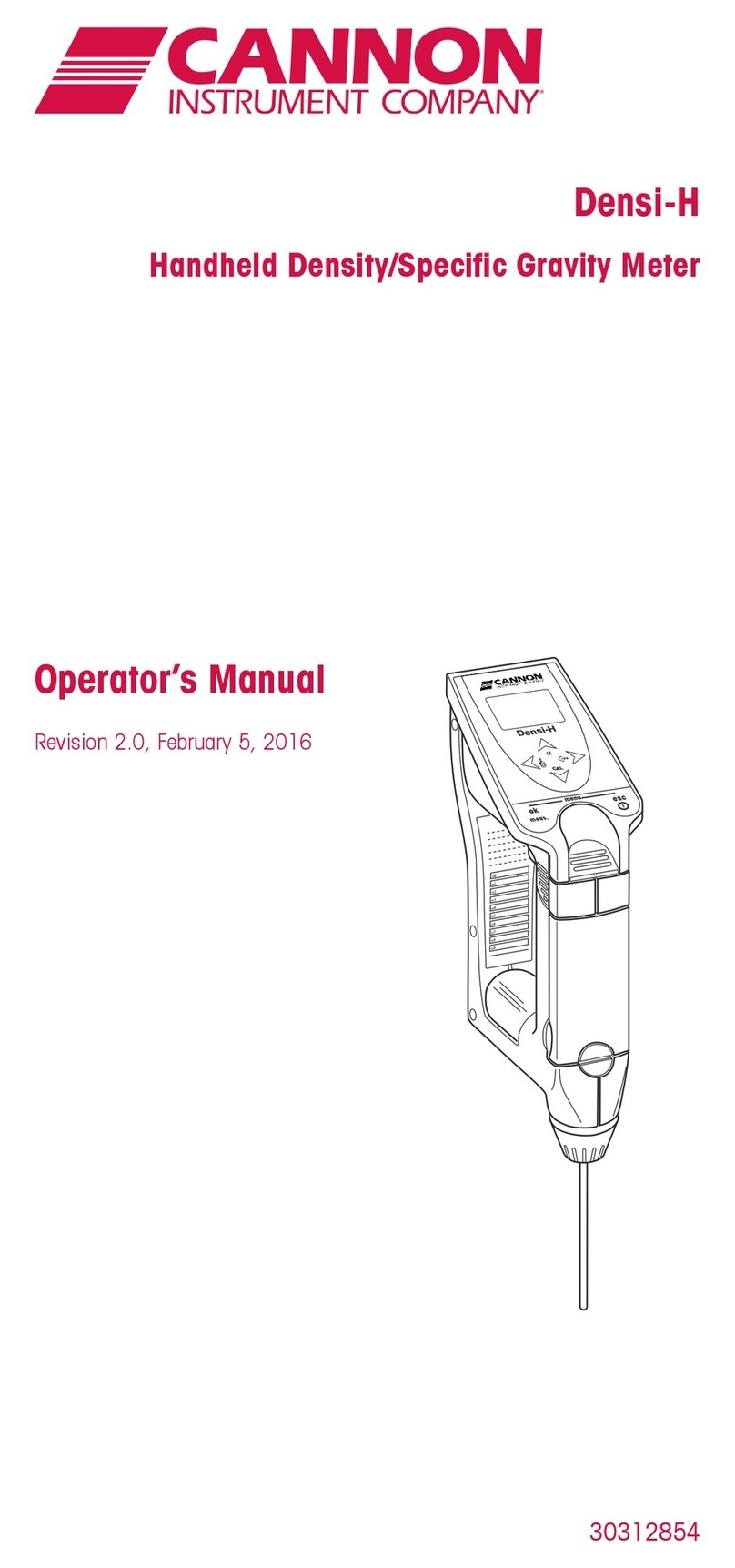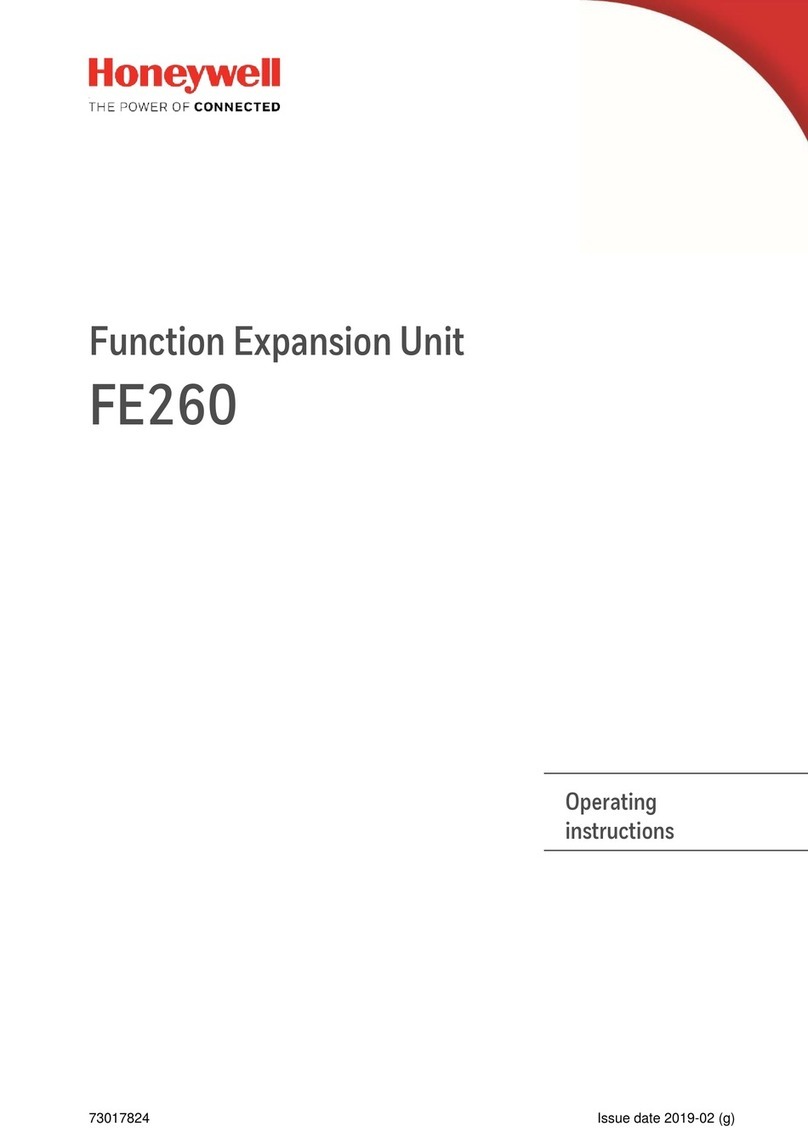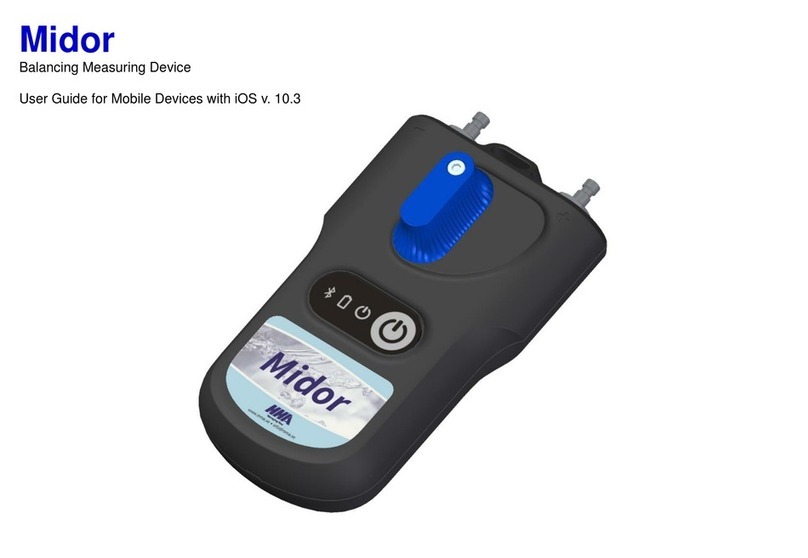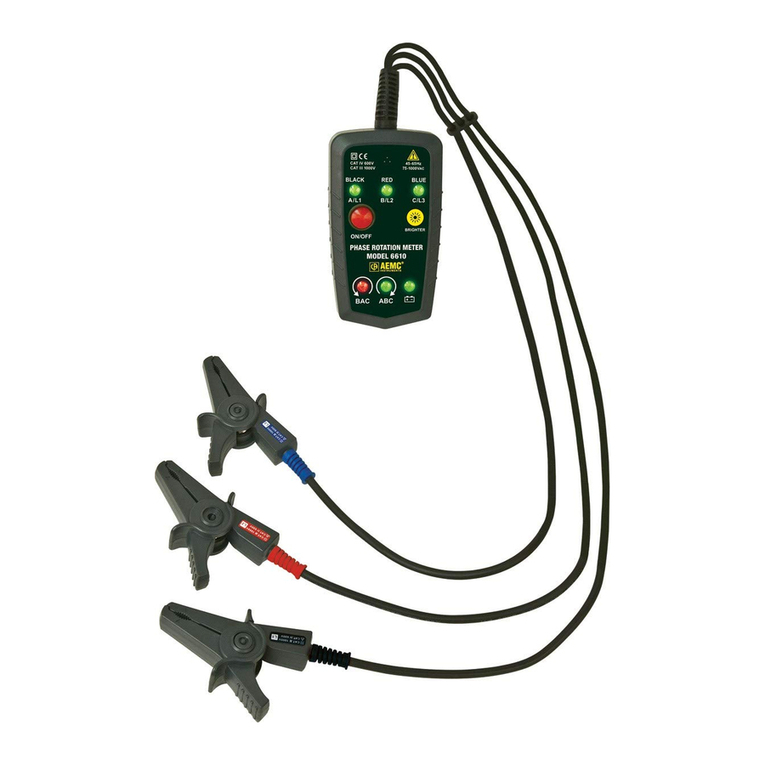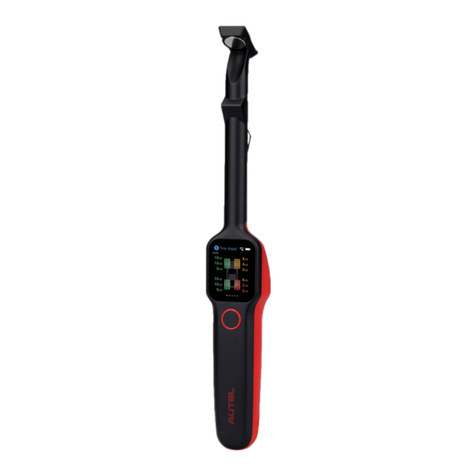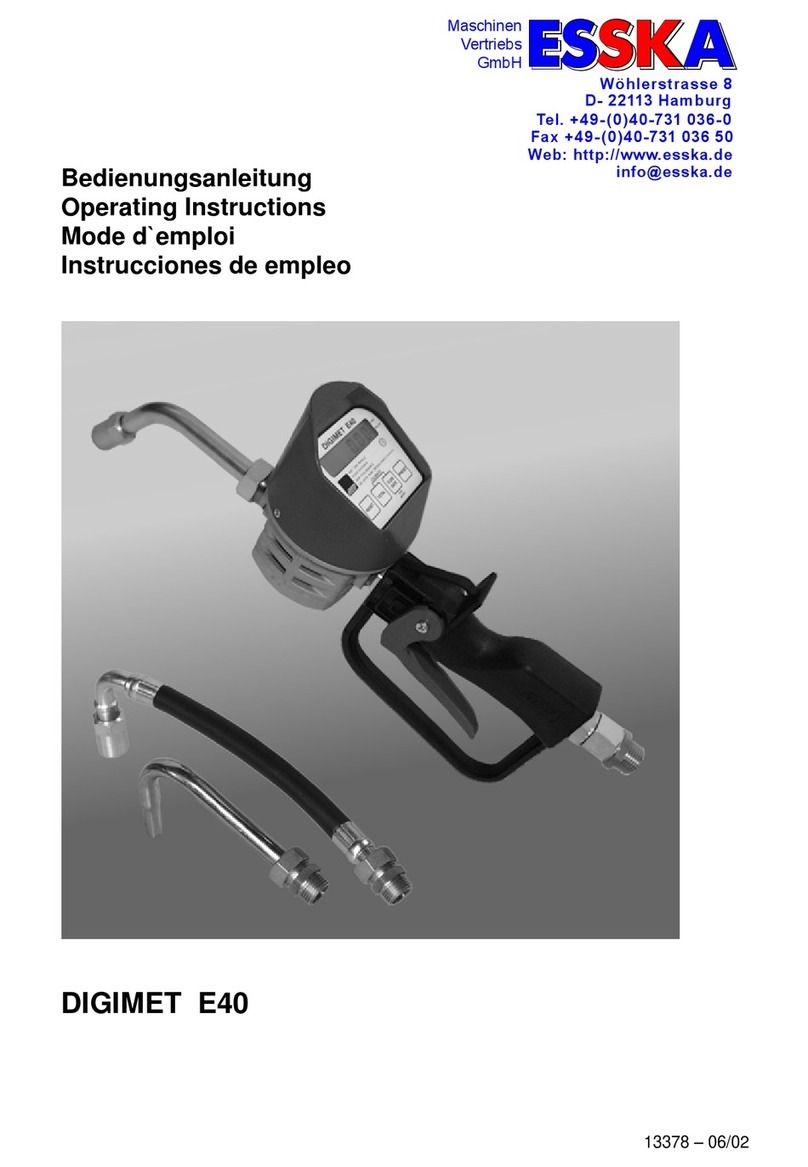Biuged BGD 285 User manual

InstructionBGD285
Manual
EXACTpH METER
BIUGEDLABORATORYINSTRUMENTS GUANGZHOU)CO.,LTD
-----------------------------------------------------------------------------------------------------------------------------------------
Add: NO.8,FuheIndustrialArea,ZhongfuRd., ZhongxinTown,ZengchengCity,Guangzhou City.
511375. China
Tel (0086)20-32955999 Fax (0086)20-32955818
E-mail service@biuged.com Website www.biuged.com

. General
Readthismanual thoroughlybeforeuseplease.
TheModel BGD285 pHmeter isa 31
2
digit decimalpHmeterwithATC(autotemperaturecompensat
-ion)orMTC(manualtemperaturecompensation).It can measurethe temperatureof the mediumtobe
measured and displaythe valuesoftemperature,pHand mili-voltageIt issuitabletomeasurethe pH
value ofaqueoussolution andthe potentialsofelectrodesinlaboratoriesofresearchinstitutes,
factoriesand mines.Ifitisequipped withan appropriateion selectiveelectrode,itcan beusedasa
terminusdisplaydeviceforpotentialtitration.
Ⅱ.MainSpecification
1.Afterhaving beenpoweredon and warmedupforthirtyminutes,theinstrumentcanbeused
continuouslyunderthefollowing conditions:
(1)Ambienttemperature:0~+40 ;
(2)Relativehumidity:less than 85%
(3)Powersupply:110VAC±11VAC,60Hz±1Hz
or220VAC±11VAC,50Hz±1Hz
2. Mainparameters:
(1)Measuring range:pH 0~14.00pH
mV 0~±1999mV(automaticpolaritydisplay)
T0~100
(2)Errorofelectro-unit:pH 0.01pH
mV ±0.1%F.S
(3)Meteraccuracy:pH ±0.01pH±1digit
mV ±0.1%F.S
T±0.5 ±1digit
(4)Inputimpedance:≥1012Ω
(5)Zerodrift:≤0.01pH±1digit/3h
(6)Errorofelectro-unitaftertemperaturecompensation:±0.01pH
(7)Overall dimension:280 200 95 mm
(8)Weight:1kg
(9)Powerconsumption:1.5W
Ⅲ.PrincipleofOperation
TheModelBGD285 pHmeter isbased on aD.C.potentialgenerated byapHelectrode and a

referenceelectrode againstdifferentacidityofsolution tobemeasured.The D.C.potentialisfed toan
analog-todigitalconverterviaapreamplifierfordigitaldisplayofpHvalue.Similarly,inan application
thatitisequipped withan appropriateion selectiveelectrodeforapotentialtitration,itisneedfor
displayofterminuspotentials.
1.Measuringtheory
Ⅳ.Structure
Themetermakeupofelectro-unit, compound electrode and temperaturesensorasFig2.
Fig. 2ThestructureofpHS-3B
Ⅴ.OperationandMaintenance
1.Setting themeter
Themetermust beset on no vibration tableand havegood earthing.
2.Preparation beforeusing
2.1Warm up themeter
a)Takeoutthe compound electrode and temperaturesensor.Preparingbuffersolution,distilled water,
beakerand filterpaperetc.TheQ9shortcircuitplugmustbeinserted intothe inputterminalofthe
instrumentbeforeinsertingtheelectrodeintotheinstrument, tomaketheinputterminalintheshort
circuit and toprotect theelectricelement.
b)Put the powerkeyon “OFF”. Insert thethree-pinpowerplugintothe ACpoweroutlet.
c)Put on the powersupply.Warmupthe meterfor10minutesbeforeusingit.
2.2How tousetheATCand MTCfunction.
Tolinkthetemperaturesensor,putthe selection knobon autopositionandthemetercan workinATC
mode. Nowthe MTCfunction willbeinvalidation.
1.Temperatureadjustingknob
2.Slopeadjusting knob
3.Settingknob
4.Selection knob
5.Poweroutlet
6.Powerswitch
7.Fuseseat
8.Connectionterminalforreference
electrode
9.Measuringelectrodeoutlet
10.Holeforelectroderod
11.Indicatorlight
12.Selection switch
13.
Temperaturesensor

a)ATCmode:Puttheselectionknobon “”.Thevalue displayedmeansthetemperatureofthe
mediumtobemeasured.At thesametimethe temperaturesignalbesenttothepH-t mixturecircuit
tocompensatethe pHvalue.
b)MTCmode:Removethe temperaturesensor,Putthe selectionknobonMTCand “”position.
Adjustthe temperatureregulation knobuntil the value oftemperaturedisplayed issameasthe
indication value ofthermometerpluged inthe mediumtobemeasured.Atthesametimethe
temperaturesignalbesent tothepH-tmixturecircuittocompensatethe pHvalue manualy.
2.3Calibration
Beforeoperating,i.e.beforemeasuringthe solution tobemeasured,the instrumentshouldbe
calibrated.However,itdoesnotmean thatitmustbecalibrated beforeoperatingeachtime.For
successiveoperating, ingeneral, it will becalibrated onceaday.
Therearetwomethodsofcalibration,one isone pointcalibration fornormaluseand the otheristwo
pointscalibration forexactmeasuring.
2.3.1 One point calibration procedure(takingATCforexample):
a)Removethe Q9shortcircuitplug,Linkthecompound electrodeandthetemperaturesensor,clean
the electrodewithdistilled waterand blotitwithfilterpaper,then plugtheelectrodeintothebuffer
solution (pH=4orpH=9.18).Tomeasurethe temperaturefirst, putthe selection knobon “”and
ATCposition,The value displayedmeansthe temperatureofthe mediumtobemeasured.
b)Putthe selectionknobon “pH”,turnthe slopeknobtothe end clockwise,adjustsettingregulator
until the value displayedequalstothestandardpH(pH=4orpH=9.18).
Note:The setting”knob will notbechangedaftercalibration finished.
2.3.2 Twopointscalibration procedure:
a)TakingATCforexample.Removethe Q9shortcircuitplug,Linkthecompound electrodeandthe
temperaturesensor,clean the electrode withdistilled waterand blotit withfilterpaper,then plugthe
electrode intothe buffersolution (pH=6.86).Tomeasurethe temperaturefirst, putthe selection knob
on “pH”,The value displayedmeansthe pHofthe standardbuffersolution (pH=7).
b)Ifthe solutiontobemeasured isacidic,takeoutthe electrode fromthe solution ofknownpHvalue
(pHvalue =6.86),clean theelectrodewithdistilled waterandblotitwithfilterpaper,then plugitinto
the buffersolution ofknownpHvalue (pHvalue =4).Adjustthesloperegulatoruntil thevalue
displayed meansthe pHofthe standardbuffersolution (pH=4).
c)Ifthe solutiontobemeasured isalkalescent, wecancalibratethe metersecondlywiththe solution
of knownpHvalue (pHvalue =9.18).Adjustthesloperegulatoruntil thevalue displayedmeansthe
pHofthe standardbuffersolution (pH=9.18).
Thecalibration ofthe instrumentiscompleted.Oncetheinstrumenthasbeencalibrated,itsSETTING
potentiometershouldnotbechanged anymore.
2.3.3 Calibration withMTCtoreference2.2(b).
3. pHvaluemeasurement
a)Incasethatthetemperatureofthesolutiontobemeasured thesameasthetemperatureofthe
settingsolution.
Rinsethe endofthe electrodewithdistilled water,andsuck itdrywithclean filteringpaper.Putthe

electrode intothe solutiontobemeasured,stirthe breakertillthe solution becomesuniform,and read
out thepHvalue ofthe solution.
b)Incasethatthe temperatureofthe solution tobemeasured differentfromthe temperatureofthe
settingsolution.
Touniformthe temperatureofthe solutiontobemeasured withbuffersolution. The instrument canbe
used afterre-calibration.Oritcanbeuseddirectlyafterthe temperatureof the solution tobemeasured
issameasbuffersolution.
4. Electrodepotential (mVvalue)measurement
a)Removethe Q9shortcircuitplugand temperaturesensor.Connectinanappropriateionselective
electrode and referenceelectrode.
b).Rinsethe electrode withdistilled water,then ,suck itdrywithclean filteringpaper.Putthe electrode
intothesolutiontobemeasured.
c)Putthe selection knobon “mV”,nowthe setting,temperatureand slopeknobsareinvalid.Stirthe
beakertill the solution becomesuniform.Then,thepotential(mVvalue)ofthe ion selectiveelectrode
can beread out, and itspolaritydisplayedautomatically.
5.Operation and Maintenance
a)Theinputterminalofthisinstrument, (i.e.the socketofthe glass electrode)shouldbekeptclean.
When it isidle, insert the short circuit pluginit, toavoidanyinvention ofdust orheavyhumidity.
b)The compound electrodecanbeusedforone year.Aftertakingoffthe cap,becarefultoavoidthe
sensitiveglass bulbinside the plasticprotection gridbeingcontactedwithhardstuff.Anydamageor
rubbingwillcausetheelectrodeinvalid.Afterthemeasurementcompleted,theelectrodeshouldbe
covered withthe protection cap. Afewamount ofsupplementarysolution shouldbecontained inthe cap
tokeepthe electrodebulbinawetstate.A3Npotassiumchloride solution isserved asan external
referencesupplementarysolution forthe combination electrode,whichcan beinjected intothe
electrode viathe small holeon thetopofit.
c)Keepthe leadofthe compound electrodeimmobiletoprevent fromdisturb.
d)The buffersolution shouldbeassured ofhighreliability.It can beprepared byuseritself.Forthe
method ofpreparingthe buffersolution, pleasesee Appendix Ⅱ.
e)Thetemperaturesensorhasalonglife. But it can not beknock.

Ⅵ.Composing
Thecompleteset ofthe instrument areastable1.
(1)BGD285 basicunit1unit
(2)Compound electrode1pc
(3)Temperaturesensor1pc
(4)Electrode supportingrod and extensionrod 1pc
(5)Electrode clamp1pc
(6)Powersupplylead 1pc
(7)Bufferpowder(pH=4, 7and9)1bagsforeach
(8)Electrode short circuit plug
(tobeinserted intheinputterminalofthe
instrument)
1pc
(9)Fuse(0.1A)2pcs
(10)Instruction manual1copy
(11)Product qualitycertificate1copy
Appendix RelationshipbetweenpHvalueofabuffersolution and temperature
Table2
pHSolution
Temp.()GRO-potassium
bithalate
GRpotassium
phosphate
monobasic borax
54.01 6.95 9.39
10 4.00 6.92 9.33
15 4.00 6.90 9.27
20 4.01 6.88 9.22
25 4.01 6.86 9.18
30 4.02 6.85 9.14
35 4.03 6.84 9.10
40 4.04 6.84 9.07
45 4.05 6.83 9.04
50 4.06 6.83 9.01
55 4.08 6.84 8.99
60 4.10 6.84 8.96
Appendix ⅡPreparation ofbuffersolution
1.pH4buffersolution
Weight 10.21 gramsofGRO-potassiumbithalate,diluteit into1000mloftwice-distilled water.
2.pH6.86 buffersolution
Weight3.4gramsofGRpotassiumphosphatemonobasicand3.55gramsofGRsodiumphosphate
oibasic, dilutetheminto1000mloftwice-distilled water.
3.pH9.20 buffersolution
Weight 3.81 gramsofborax, diluteit into1000 mloftwice-distilled water.
Table of contents
Other Biuged Measuring Instrument manuals
Popular Measuring Instrument manuals by other brands
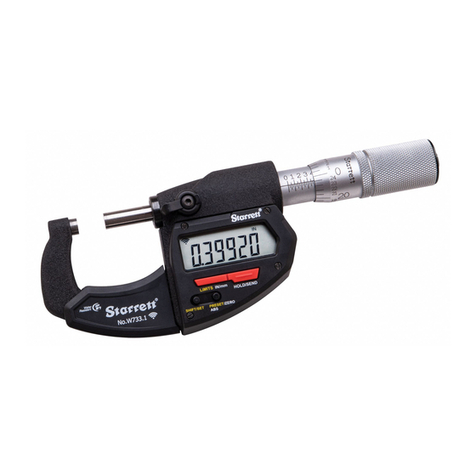
Starrett
Starrett W733.1 user manual
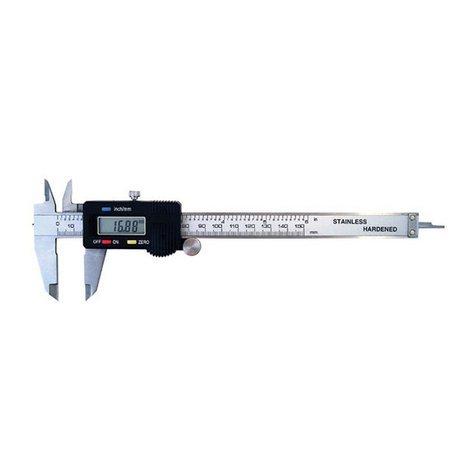
Powerfix Profi
Powerfix Profi Z22855 Operation and safety notes

Vetek
Vetek DYNA-LINK ERT Series manual
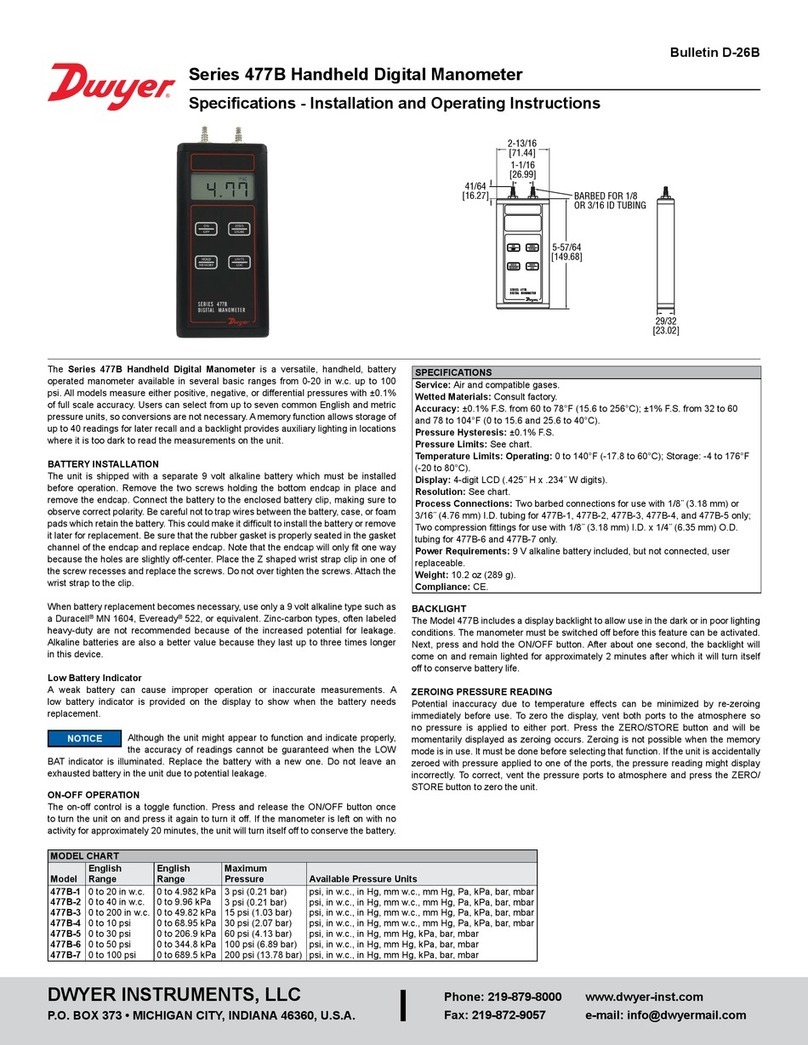
Dwyer Instruments
Dwyer Instruments 477B Series Installation and operating instructions
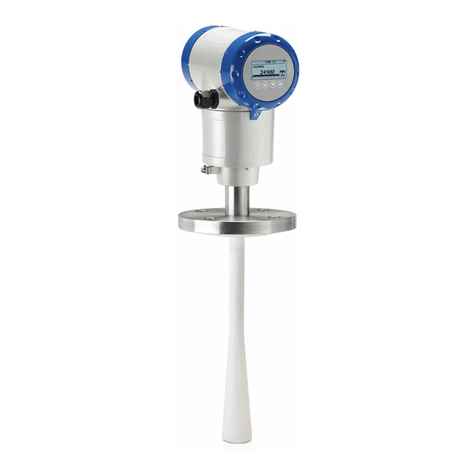
KROHNE
KROHNE OPTIWAVE 5200 C Quick start-up

Netatmo
Netatmo Smart Anemometer manual

Xylem
Xylem Sensus PolluTherm F Installation and operating instructions
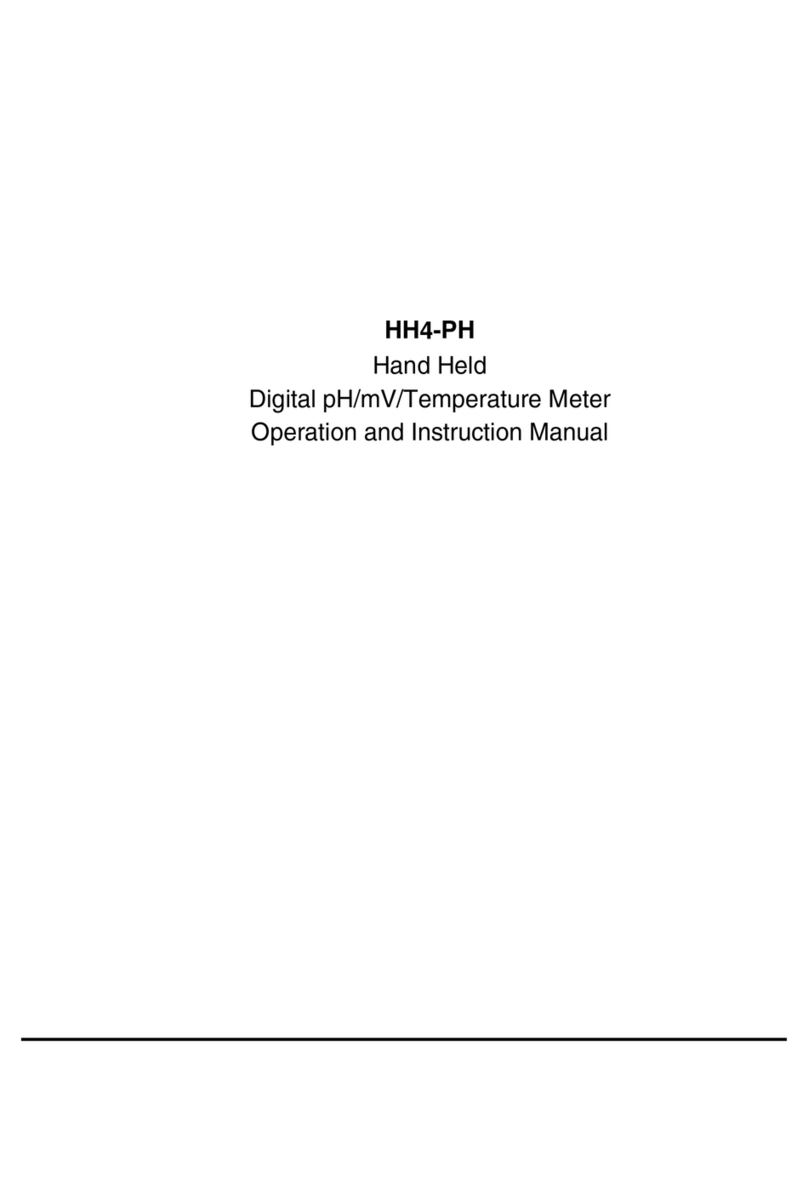
AMALGAMATED INSTRUMENT
AMALGAMATED INSTRUMENT HH4-PH Operation and instruction manual
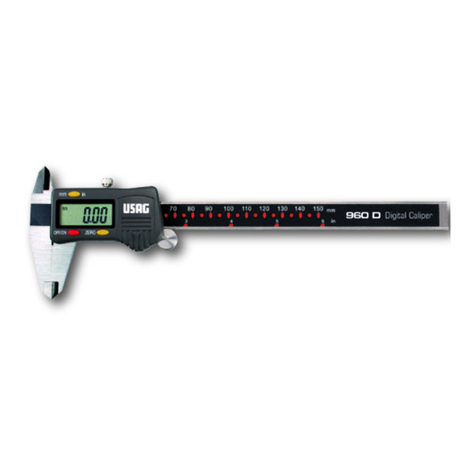
USAG
USAG 960 D manual

Agilent Technologies
Agilent Technologies 35670A quick start guide

Hanna Instruments
Hanna Instruments HI88713-01 instruction manual
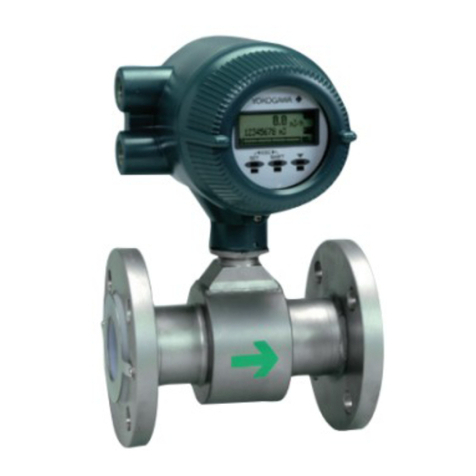
YOKOGAWA
YOKOGAWA Admag AXW user manual

